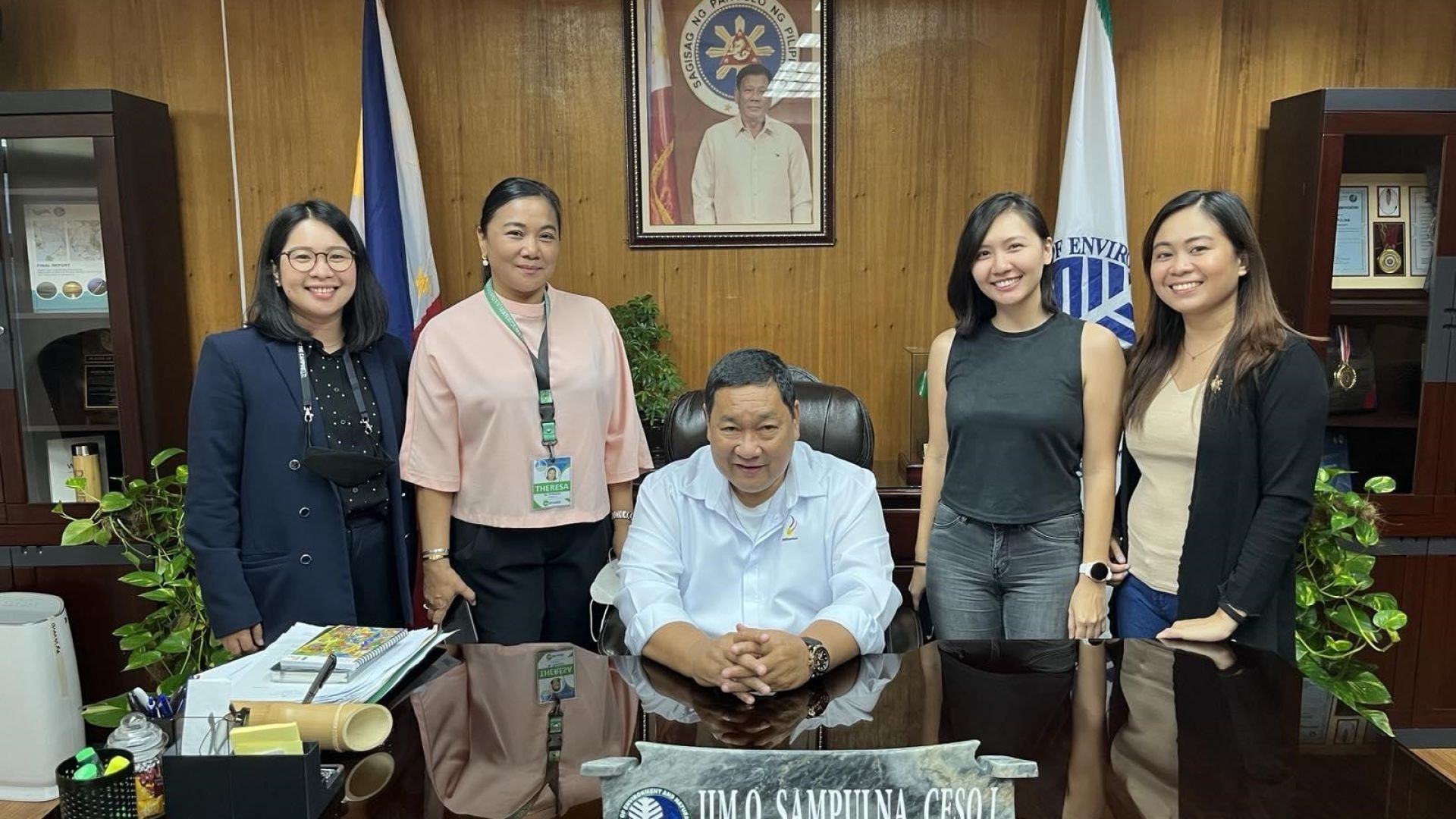The country is the first megadiverse in the ASEAN region to officially support the global 30×30 target; Leaders & civil society organizations in the Philippines and around the world applaud the announcement

The Philippines recently announced its commitment to support the protection of at least 30% of the planet’s land and ocean by 2030 ahead of the biodiversity negotiations happening next week in Montreal, Canada. Also known as 30×30, it is one of the targets set to be finalized at the 15th Conference of the Parties to the Convention on Biological Diversity (CBD), which is seen as the “Paris Agreement” for nature and people.
Former Environment and Natural Resources Secretary Jim Sampulna spearheaded the commitment during his term, which had continued alignment with current Secretary Antonia “Toni” Yulo-Loyzaga.
The Philippines joins Cambodia, Japan, India, Bhutan, Nepal, Pakistan, Sri Lanka, Bangladesh, Papua New Guinea and the Maldives as the Asian members of the High Ambition Coalition (HAC) for Nature and People. The decision has also given way to Thailand recently announcing their support.
Co-chaired by Costa Rica, France and the United Kingdom, the HAC is an intergovernmental coalition of more than 100 countries that have committed to champion the global 30×30 goal. HAC eyes to help confront an escalating crisis facing the natural world that threatens up to one million species with extinction within decades.
“Establishing protected and conserved areas are among the most effective ways to prevent the destruction of wildlife habitat, which is the biggest driver of biodiversity loss around the world. Any successful strategy to safeguard biodiversity must include effectively conserving the most important places on land and in the ocean and advancing the rights of Indigenous Peoples and local communities (IPLCs),” said Brian O’Donnell, director of Campaign for Nature, the organization at the forefront of the 30×30 campaign worldwide.
O’Donnell added that the Philippines is positioned to lead on each of these issues. “We applaud them for supporting the ambitious, science-driven 30×30 global target,” he said.
As one of the 17 megadiverse countries around the world, the Philippines is also among those that passed laws advancing the rights of IPLCs.
“Combined with the Indigenous Peoples Rights Act of the Philippines, we already have the policies in place to facilitate robust conservation of our last remaining wild places while ensuring that the rights of IPLCs are upheld,” KM Reyes, National Geographic explorer and co-founder of the Centre for Sustainability PH, the organization leading the campaign in Southeast Asia.
Former DENR Undersecretary Tony La Viña said the Philippines has a crucial role to play in leading the world on strategies to conserve nature.
“Today’s announcement officially supporting the 30×30 target demonstrates exactly the type of leadership and commitment we need,” added La Viña who is currently the Associate Director for Climate Policy and International Relations of Manila Observatory.
The country’s decision to support the HAC is backed by public opinion. A recent opinion poll found 95% of Filipinos were either extremely or very concerned about the biodiversity crisis, and 95% supported the global goal to protect at least 30% of the planet’s land and ocean by 2030.
“With the majority of the 30×30 SEA Coalition members coming from the Philippines, we are grateful that our government leaders are heeding not just the call of the masses but also what science is telling us on the need for this high ambition for our planet,” said 30×30 SEA Campaign Lead Jamie Dichaves, adding that the decision further fuels their coalition to continue on the work of grassroots conservation, all in partnership with the government.
Dichaves and other coalition members like WWF-PH, Manila Observatory, Parabukas, and Pacific Environment have been working closely with the DENR.
The 30×30 SEA Coalition has previously commended DENR for taking a stand in the protection of global biodiversity as well as highlighting the needs and role of indigenous peoples and local communities during the set of negotiations held in Geneva, Switzerland last March, and in Nairobi, Kenya last June.

“The Philippines is a respected leader regarding biodiversity conservation, and their participation in this intergovernmental coalition sends a strong message not only across the region, but across the planet, about the importance of protecting more of our natural world,” said former US Senator Russ Feingold, chair of the Campaign for Nature’s Global Steering Committee.
The 30×30 proposal originated with scientists. Overwhelming scientific evidence shows that conserving at least 30% of the planet’s land and ocean is a key way to help address global biodiversity loss–in addition to storing carbon, preventing future pandemics, bolstering economic growth, increasing fisheries’ production, and advancing Indigenous rights.
“This development is also well-timed for our decision-makers to work towards the inclusion of Key Biodiversity Areas (KBAs) in the current coverage of conserved areas preserved by laws and policies,” said Dr Neil Aldrin Mallari, President of Center for Conservation Innovation PH and Regional Focal Point of the IUCN World Commission on Protected Areas.
According to Dr Mallari, they have identified a total of 224 KBAs across the archipelago that shelters vulnerable and irreplaceable species populations. More than half of these areas are outside of the current PA network but are largely situated in ancestral domains or territories managed by local communities.
“Should these areas be included, the current conservation area network in the country will be doubled, and, more importantly, be situated in areas of high conservation value, which will allow the Philippines to greatly contribute to the global target,” he said.
The economic benefits of conserving 30×30 are strong: an independent study prepared by more than 100 economists and experts found that meeting the 30% target will generate financial and ecosystem services benefits at least five times the cost.





